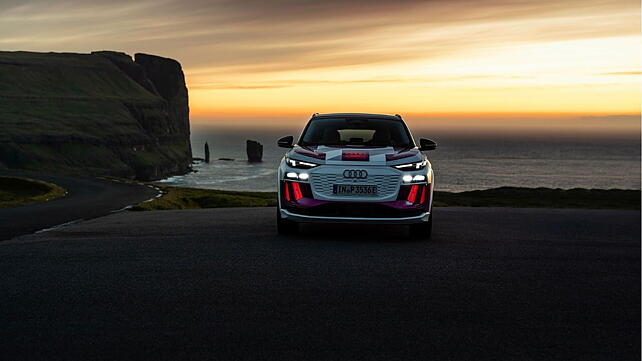
The German luxury carmaker Audi has unveiled the second generation of digital OLED lighting technology with the Q6 e-Tron, which shapes the look of its new models and increases the range of functions many times. This, in turn, improves road safety, as demonstrated by the communication light in the digital OLED rear lights.
With up to eight digital light signatures for the headlights and rear lights, drivers can enjoy a new level of freedom in personalising their Q6 e-tron. Customers can select a signature in one of two ways, via the myAudi app or in the car via the MMI. Six additional signatures with a coming home/leaving home lighting scenario and the corresponding digital light signature are available through additional optional packages.
In the case of the second-generation digital OLED rear lights, the six 360-segment OLED panels generate a new image every ten milliseconds using a specially developed algorithm. This algorithm lets the active digital light signature demonstrate the car’s vibrancy and ability to interact personally by making the Q6 e-tron’s 'brain activity' visible through constant movement.
The active digital light signature at the front is created via the interaction of the algorithm with 12 dimmable segments, while at the rear, all the digital OLED segments are used. The individual light segments interact so that the light signature's overall image does not vary in luminous intensity.
With the next generation of digital OLEDs in the rear lights that now follow in the Audi Q6 e-tron, Audi is significantly expanding the range of functions and design freedom while improving road safety. For the first time, the digital OLED rear lights can specifically communicate with the immediate environment (car-to-X communication).

The number of segments per digital OLED panel has increased from six to 60 compared to the first generation. Six OLED panels with 360 segments in total are used in the Q6 e-tron's rear lights. The new E3 electronic architecture allows controlling this significantly increased number of segments using a software module on one of the domain computers. The steady increase in the number of segments per digital OLED panel will, in the future, make it possible to develop the rear of the car into a display that further improves car-to-X communication and road safety.
The second-generation OLED lighting technology expands proximity indication in the new Q6 e-tron to include a communication light. Integrated with the digital OLED rear lights, it warns other road users foresighted of accidents and breakdowns by displaying a specific static rear light signature with integrated warning symbols and the regular rear light graphic in critical road situations.
The assistance system thus aids Audi drivers foresighted and all other road users. As with the advanced traffic information system in the A8, which warns road users of accidents or hazards via the digitalised headlights, the communication light uses data from the swarm. In addition, second-generation digital OLED rear lights activate the communication light with warning symbols for emergency assist, RECAS (rear-end collision alert signal), hazard warning lights, emergency calls (eCall), roadside assistance calls (bCall), and emergency brake lights.
The communication light also adds an extra dimension to the exit warning function. Previously, it only informed the occupants when exiting the car, for example, if another car or a bicycle was approaching. But now, a specially adapted light signature in the rear light graphic warns cyclists or drivers approaching from behind. In this way, the Audi Q6 e-tron extends its safety concept to other road users, increasing road safety for everyone.
The communication light also uses a specific light signature at the front and rear to indicate the car’s park assist status when it is in automated parking mode. This makes it clear to road users in the immediate vicinity that the car is safe to approach.
Also Read: